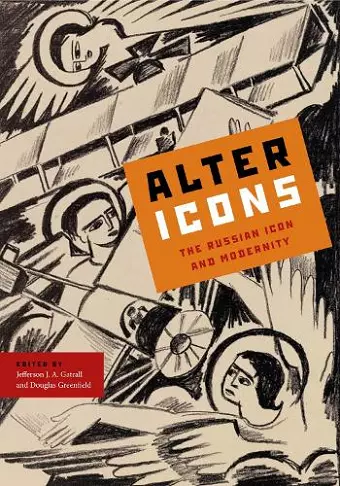Alter Icons
The Russian Icon and Modernity
Jefferson J A Gatrall editor Douglas Greenfield editor
Format:Hardback
Publisher:Pennsylvania State University Press
Published:28th Oct '10
Should be back in stock very soon

Passage into the modern world left the Russian icon profoundly altered. It fell into new hands, migrated to new homes, and acquired new forms and meanings. Icons were made in the factories of foreign industrialists and destroyed by iconoclasts of the proletariat. Even the icon’s traditional functions—whether in the feast days of the church or the pageantry of state power—were susceptible to the transformative forces of modernization. In Alter Icons: The Russian Icon and Modernity, eleven scholars of Russian history, art, literature, cinema, philosophy, and theology track key shifts in the production, circulation, and consumption of the Russian icon from Peter the Great’s Enlightenment to the post-Soviet revival of Orthodoxy. Alter Icons shows how the twin pressures of secular scholarship and secular art transformed the Russian icon from a sacred image in the church to a masterpiece in the museum, from a parochial craftwork to a template for the avant-garde, and from a medieval interface with the divine to a modernist prism for seeing the world anew.
In addition to the editors, the contributors are Robert Bird, Elena Boeck, Shirley A. Glade, John-Paul Himka, John Anthony McGuckin, Robert L. Nichols, Sarah Pratt, Wendy R. Salmond, and Vera Shevzov.
“This elegant volume, replete with full-color plates and multiple illustrations, demonstrates that far from falling into ‘decline,’ ‘decay,’ or ‘loss’ from its encounter with modern aesthetics, the Russian icon continues to serve its ‘intermedial,’ ‘liminal’ function, remaining a phenomenon of the paradoxical ‘living tradition’ that is Orthodoxy. By definition both material and spiritual, the icon finds a place in museum or poem as well as church, marketplace as well as film. And, as elucidated here, the obraz serves itself up as a subject for scholarly investigation as easily as an object of religious devotion. Kudos to the authors, editors, and publisher.”
—Judith Deutsch Kornblatt, University of Wisconsin–Madison
“This groundbreaking book will be necessary reading for anyone invested in the icon—not only those concerned with its history in Russia but also those concerned with its widest ramifications in modernisms of the East and West. The essays examine from diverse viewpoints the largely unexplored centrality of the material icon in the imperialist Russian period as well as in the twentieth century. Not a passive object or simple mirror, the icon was an agent in these centuries that worked simultaneously for tradition and the avant-garde, for individual craftsmanship and mass production, for church devotion and museum ideologies, and more. These essays demonstrate not icons’ gradual disappearance and displacement, but rather the indispensability of the icon for any understanding of Russian culture, of its conflicting and complicated modernisms.”
—Glenn Peers, University of Texas
“Well illustrated and designed, this book is a significant contribution to the study of Russian culture.”
—W. C. Brumfield Choice
“Icons can have profound political and social implications, and while the focus of the eleven chapters in this book is on the icon in modernity, there is enough material outlining the icon’s journey from medieval to the early modern to be of interest to any scholar of historical trends over the past millennium. . . . As many other reviewers have noted, this book is ground-breaking for its analysis of the traditional as well as innovative role of icons during a period where they were in danger of being eclipsed by the state apparatus. . . . After reading this work icons will never look the same.”
—John D’Alton Parergon
ISBN: 9780271036779
Dimensions: 254mm x 178mm x 28mm
Weight: 1048g
304 pages